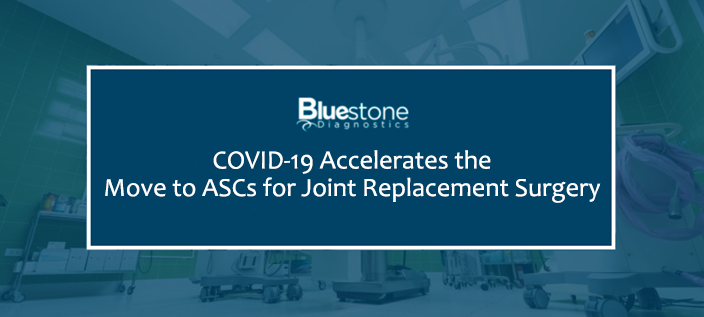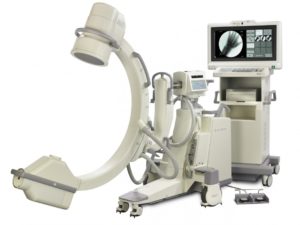
COVID-19 Accelerates the Move to ASCs for Joint Replacement Surgery
Categories: blog
Prior to the beginning of the pandemic in 2020, the healthcare industry was tracking the rising popularity of Ambulatory Surgery Centers (ASCs) as an alternative to more expensive in-patient hospital surgeries. The number of ASCs providing outpatient joint replacements grew from only 25 in 2014 to over 200 in 2017. While that growth slowed slightly in the intervening years running up to 2020, the number is now over 500.
This rapid growth has been fueled in part by changes in CMS reimbursements in 2020, when the agency removed total hip replacement from its in-patient only list and approved payment for total knee replacements in ASCs for the first time.
As COVID-19 spread across the country in the first quarter of 2020, and hospital systems became overwhelmed with patients, elective in-patient surgeries were either cancelled or limited so hospital staff could focus their attention on COVID-19 patients. As states allowed hospitals and ASCs to resume elective procedures, a natural outcome was the move of those elective surgeries to ASCs who were not treating COVID-19 patients at all and had the capacity and expertise to handle the volume.
ASCs have proven to be the smart choice, with most studies pointing to the positive outcomes for the patient on the clinical side and economic benefits on the business side.
Some procedures, such as anterior hip replacements, are particularly attractive in an ASC setting to both patients and surgeons. It is a less invasive procedure that can be performed on an out-patient basis. This makes it an affordable and attractive option to many patients.
While anterior hip replacements are attractive to patients, there are some areas an ASC administrator or surgeon needs to examine to be sure that outcomes and patient satisfaction scores remain high. One of the key factors in achieving positive outcomes is patient selection. Implementing strong protocols and methods for patient selection increase the ASCs ability to safely perform anterior hip replacements and provide more predictable outcomes. This generally means the patient must be fit and actively able to participate in their own recovery at home and have the support available to assist them.
Another area that should be looked at is using the equipment that provides the most accurate device positioning to minimize leg length inequality. Anterior hip replacement is performed using fluoroscopic assistance to accomplish this. That means you will need a c-arm with an extended field of view (i.e., OEC 9800 or OEC 9900 with 12” image intensifier) that delivers accurate high-resolution images in real time to your physician and clinicians.
The most cost-effective way to procure a c-arm is to choose a refurbished unit. For example, the OEC 9800 C-Arm with 12” image intensifier – the c-arm most familiar to many orthopedic surgeons and the standard from which many of its competitors are measured – is available at a considerable savings. If you can find and acquire the newer OEC 9900 Elite C-Arm with 12” image intensifier from a reliable reseller, you may be able to achieve a significant savings over purchasing a new system. C-arms are available to rent, lease, or purchase.
Bluestone Diagnostics, Inc. has over twenty years of experience in selling and renting refurbished diagnostic imaging equipment, including mobile c-arms, mini c-arms, digital portable x-ray systems, ultrasound systems and other modalities. That experience includes a hands-on, consultative approach that will enable you to evaluate your equipment needs so you can make an informed decision. Contact us at (877) 904-1904 so we can help you determine your best options.

